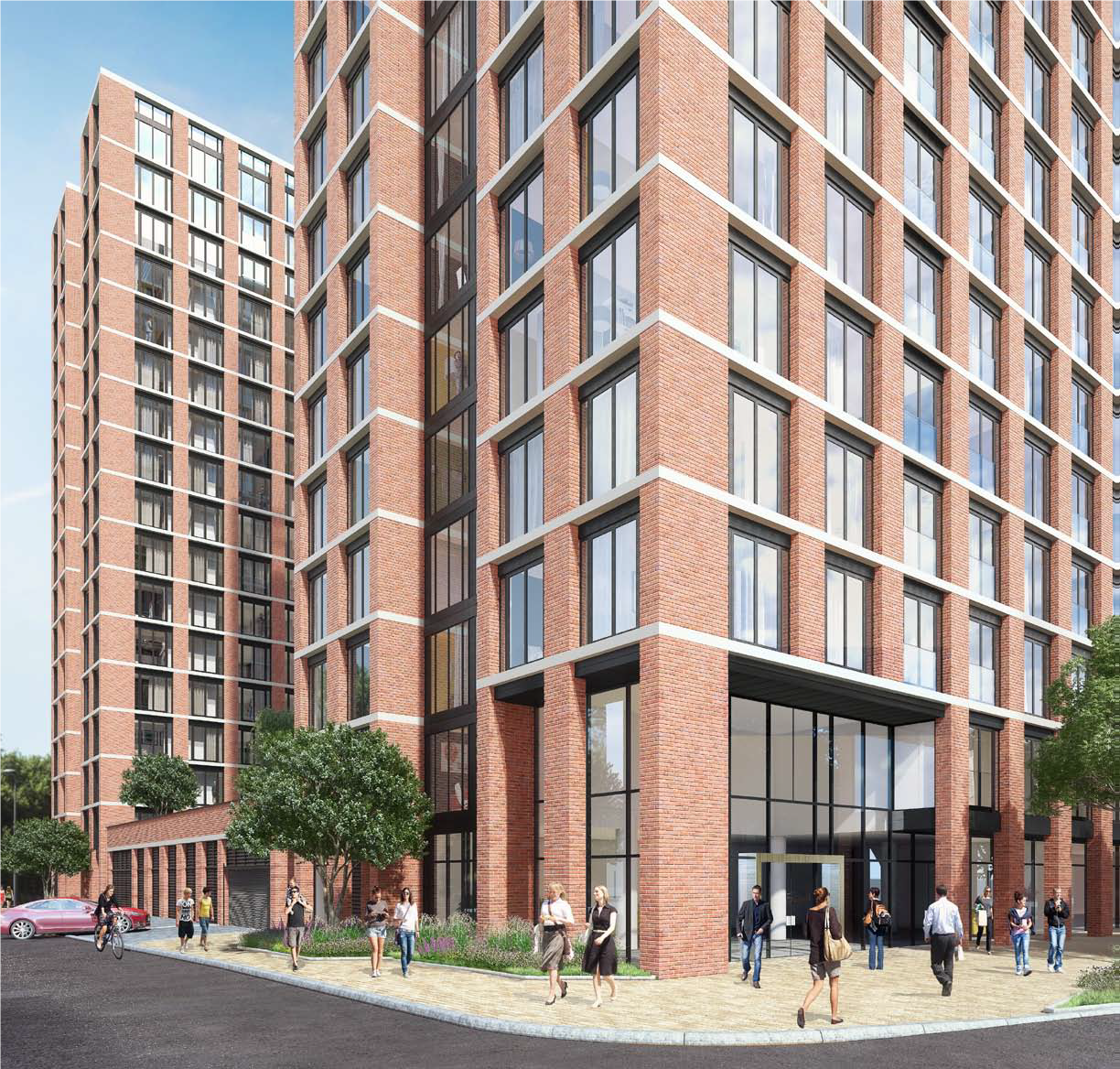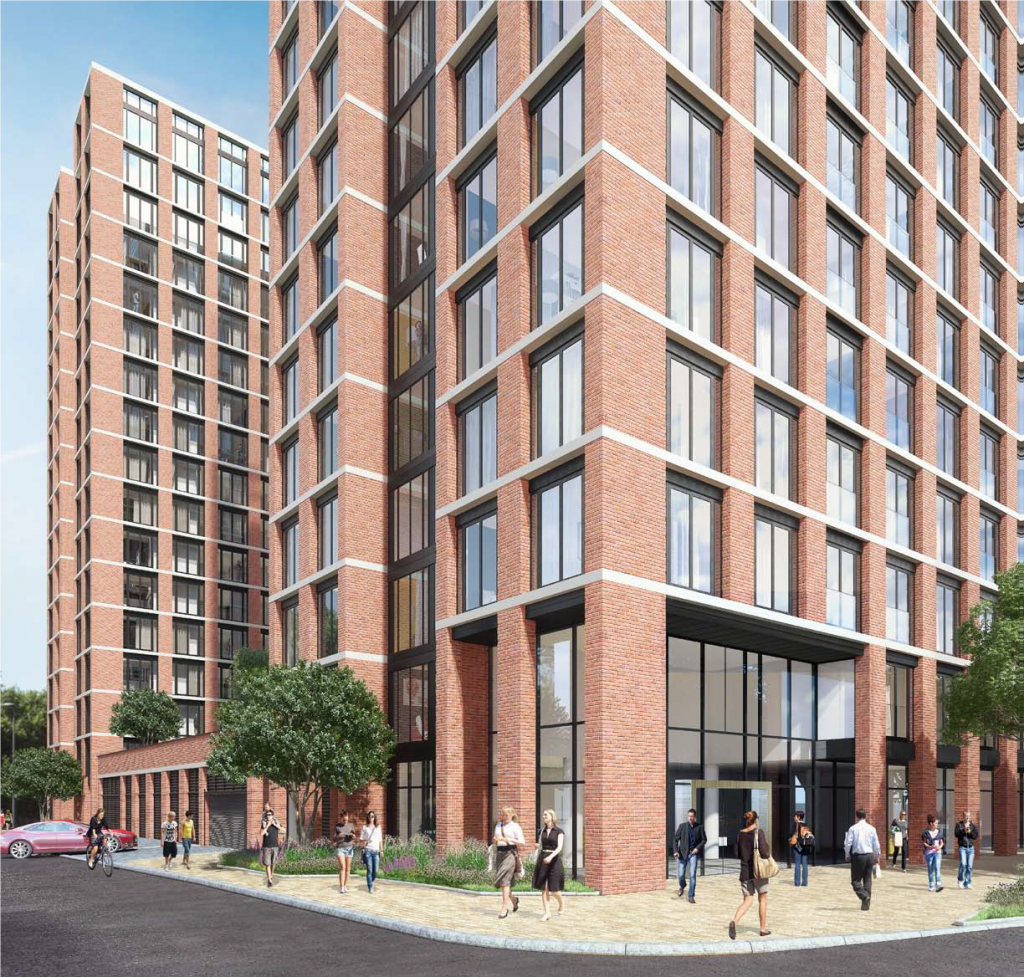
Design at the Forefront of UK’s Leading Residential Market
A new residential design paradigm
The housing crisis in the UK has been at the forefront of the political and financial landscape since the findings of the Barker Review in 2006 shone a spotlight on the overwhelming housing supply shortage. The search for solutions remains a National priority as the attempts to meet housing needs through traditional forms of tenure have fallen short of meeting housing requirements.
The ‘built-to-rent’ (BTR) sector is increasingly considered a viable alternative and has experienced substantial growth both in London and in the regions. The new asset class is forecasted to continue to increase its contribution to the UK housing supply as new institutional investors, developers and local councils look to enter the market.
The advent of the BTR market in the UK has been inspired by several factors including affordability and a ‘return to urban living’ allowing for the convenience of a ‘live-work-play’ lifestyle as well as an increasing demand from institutional investors for long term yield from real assets. This brought with it a change of paradigm in how residential buildings should be designed.
BTR projects are developed as operating businesses to be owned by management companies and institutional investors aiming to create medium to long term value through the maximization of net operating income and compression of yield. The viability therefore is based on balancing the residents experience – who as ‘customers’, are the main source of revenue – with whole lifecycle costs, including both development and operations. For the business model to be successful, projects must suit the people that they aim to attract and be able to develop brand equity. Such model requires design standards and specifications that set it apart from the rest of the residential sector.
Design challenges of build to rent
The design of BTR developments places a greater emphasis on standardization and durability to optimize operations and allow for increased longevity and scalability across multiple projects. However, the design also needs to be flexible enough to allow for multiple uses and adapt to changing lifestyles and evolving preferences of its target tenants. This includes the ability to re-configure layouts, particularly in communal areas as well as provision of enough differentiating design factors relative to the competition and specific to each location and target price point.
In BTR developments, creating flexible communities is often as important as flexible design of the product itself. The provision of flexible amenities and permanent on-site management provides opportunities to generate additional revenues while enabling shared experiences that create communities within the building. For the amenities to stay relevant, they need to retain the ability to reshape the customer offering over the lifecyle of the asset. This is a key competitive advantage as most of the rental stock in the UK is still composed of ‘buy-to-let’ units which are not professionally managed and lack adequate amenities.
BTR developments require additional upfront investment in design differentiation, longevity and customer service. In addition, there is often a preference for urban locations with access to public transport and leisure activities which often have higher land prices and construction costs. However, its viability needs to measure design ratios and lifecycle costs against the long-term trend flexibility and design adaptability. While there is a still a need to optimise the area available for tenants, with the right number of apartments per floor and the right size (or mix of sizes) supported by an effective building shape and core arrangement (including wall-to-floor and net-to-gross ratios) maximizing units per floor/ per core, it is often worth investing more on amenities rather that optional ‘sales differentiators’ in the units themselves to attract prospective tenants and increase retention rates.
Design and build to be rentable
Gradually, as more evidence is becoming available and planning policy and regulation evolves with the growing BTR market Design will be at the forefront of how to best address the key challenges posed by the requirements of the BTR business model:
Create functional separation with gradual transition: BTR developments require a gradual transition between public and private areas. In between the public areas and the private units, common areas of the building need to provide for front of house areas accessible to the public as well; resident’s shared areas which should generate additional revenues; and back of the house which should operate independently.
Emphasize the ‘arrival experience’: the design of the lobby is central to the success of the BTR developments. It should be placed at the center of the building’s functional diagram with direct access to all functional areas and it should emphasize the ‘arrival experience’ through design features, amenities and services which increasingly considered a key factor in attractive prospective tenants. It also provides key opportunities to generate additional revenues not only from residents but the public as well.
Move beyond physical facilities to customer service: Successful designs need to emphasize how residents will live and interact with the building, its facilities and develop strong communities as a priority. There’s a move away from expensive amenities, such as swimming pools and gyms, to more flexible, open-plan space that can be used for a variety of purposes, including co-working, meeting and entertaining areas as well as private open space.
Focus the design on convenience: The convenience factor of BTR developments is often considered a key feature that makes them stand-out over other rental projects. The design should maximize the use of innovative technologies in operations and management, with for example all utility contracts in place, all (or most) shared amenities included in the rent and single point of contact in terms of any queries or issues with each apartment.
Design Buildings with service teams in mind: Customer service is fundamental to the BTR model. It is crucial that managers, concierge and maintenance teams all have dedicated spaces on- site. So, whether tenants are single professionals of a family, they can have interactions with a member of the team from the moment that they first enquire about a space.
Attention to Interior Design through standardization with adaptability: The design of BTR developments should provide for high quality interior design while standardising fixtures and fittings to maintain quality standards and benefit from cost efficiency within and between projects linked to direct programme wide procurement arrangements. This will allow operators to keep a stock of items and speed up repairs to avoid disruptions to tenants and minimise the risk of potential void periods.
Create flexible floor plans: Plans should have built-in flexibility of unit mix depending of the take up, but also reflect the exact requirements of the market based on detailed understanding of the economic and cultural background of the customer. While the majority of the unit mix should be compromised of one and two beds, these should be designed to allow for different users to share the same unit as well as for the possibility to be converted in smaller and larger units.
Match unit sizes and specifications with yield: Unit sizing needs to be aligned with both costs and rental price points to maximize yields. While smaller apartments generate the highest yield, they also cost more per square foot to build and fit out. Apartment specification should emphasize a ‘turn-key’ approach including furniture, fittings and equipment enabling tenants to take occupancy immediately upon completion and offer different furniture packages.
Contribute to placemaking: The design of the external public areas should be considered an intrinsic part of the developments amenities and integrated with the ground floor. By improving the public realm and opening the amenity space to the public, not only can it generate additional revenues and help attract prospective tenants, but it can also provide contribute to placemaking and act as a catalyst for wider urban regeneration.
The need for a BTR vision
The design of successful BTR developments requires an understanding of the business model in order to provide bespoke solutions that address both the short and long terms requirements of its financial viability. It is critical that design, development expertise and investment funding are brought together at a point early enough in the development programme where the design can be influenced to overcome these challenges. The real challenge is to find developers and investors that recognize the financial benefits of bespoke Build-to-Rent design and can provide the vision to deliver it.
Please click here to download the article: Design at the Forefront of UK’s Leading Residential Market
